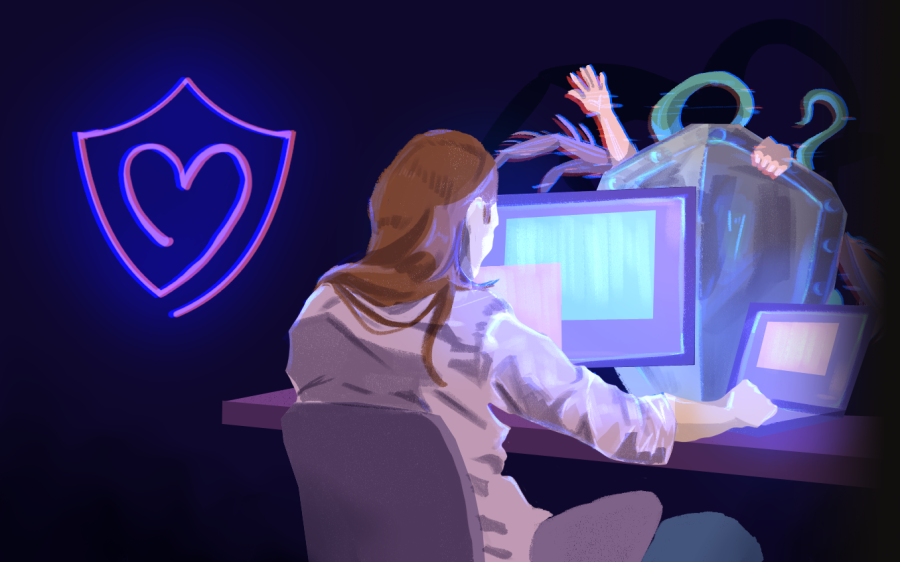Firewalls and filters: District aims for student online safety
This website is blocked. The person who set up this computer has chosen to block this site. Try contacting the system admin.
Why does this message appear?
Blocking certain websites is part of Palo Alto Unified School District’s effort to keep students safe online, according to PAUSD’s Chief Technology Officer Derek Moore. Students, however, have brought up equity and privacy concerns, worrying that the district has too much access to their data and that students who use personal technology have a greater degree of privacy and access than those who use school technology.
The Center for Democracy and Technology released a report in 2021 stating that school internet filters raise “critical red flags for student equity and privacy protection.”
PAUSD is required to block and filter harmful content in accordance with the Children’s Internet Protection Act, according to the Federal Communications Commission. At all PAUSD campuses, a firewall on the Wi-Fi filters resources and content for all of its users.
“The way our Wi-Fi is set up, every user uniquely joins as themselves,” Moore said. “It’s seamless and it works so it doesn’t allow you access to things that you shouldn’t have.”

At home, students using loaner devices are included in the district’s internet safety system through the Securly Google Chrome browser extension. Securly aims to block “adult” content, malware and phishing, while allowing everything else, according to Moore. To do this, Securly has to store student search history. This data is held onto for only 90 days before being deleted.
However, according to the CDT’s report, 80% of students whose schools use monitoring software reported being more careful about what they search online. While still subject to internet filters when using school Wi-Fi, those who use their own devices have access to the unfiltered internet at home without their activity being recorded.
Palo Alto High School freshman Elise Andrade said that this creates a discrepancy between students who can afford personal computers and those who cannot.
“If you only have access to your school computer, it definitely limits what you do on your own time,” Andrade said. “There are a lot of random websites that are blocked, so there is definitely an equity aspect to it.”
Monitoring of students’ browsing history concerns some students who want the district to balance safety with privacy.
“At some level, they [PAUSD] do need to monitor everything because with widespread access to the internet, you can do a lot of things, but sometimes, that seems like a little bit of an invasion of privacy,” Andrade said.
Senior Zach Brandt added that the monitoring feels unnecessary.
“It’s sort of coddling us,” Brandt said. “Like we can’t be trusted to use the internet.”
But Moore emphasizes that browsing history is left alone until it is needed in the event of a student safety incident.
“There are only four people in our whole district that have access,” Moore said. “We need to be able to react quickly to incidents as they arise.”
Senior Artem Tesov agrees that data collection shouldn’t pose a threat to students.
“Students should not be afraid to have their history monitored,” Tesov said. “If you are not doing anything wrong, there should be no issue with the school district having your data.”
Moore emphasizes that the data harvested by Securly is mandatory for it to operate and that the district respects students’ privacy unless absolutely necessary.
“Nobody is actively sitting at a desk somewhere in a dark room looking at it [student’s data],” Moore said. “It’s just part of the system.”



